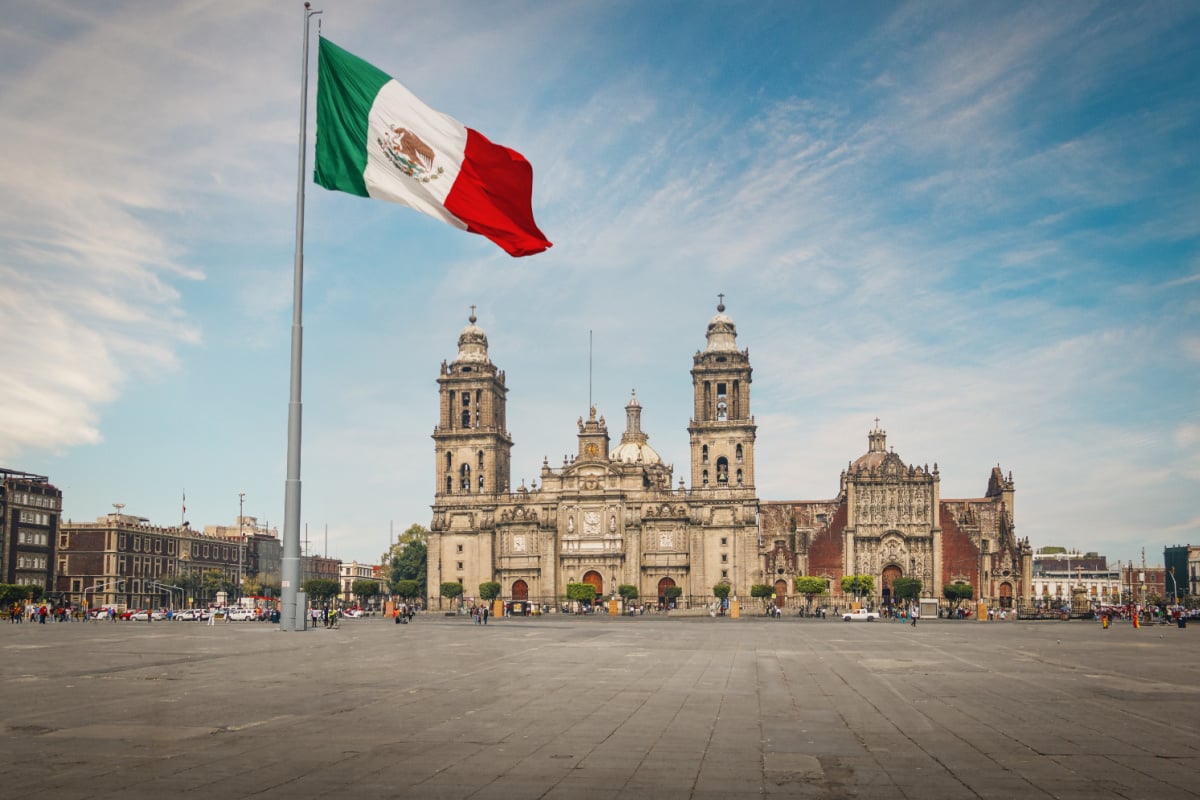[ad_1]
Last Updated
This week, the U.S. State Department issued a new travel advisory update for Mexico.
At first glance, not too much has changed: The same places that the State Department flagged earlier this year for the highest risk to travelers remain flagged, while the same places that were marked as lower-risk destinations remain as such.
With that said, there’s still plenty to unpack with this new advisory, so let’s dive right into it.

First, a Quick Summary
Unlike most other countries, where the State Department puts the entire country in one category when issuing a travel advisory, the U.S. issues and updates advisories for each Mexican state. As a result, Mexico has its own detailed map where each of Mexico’s 32 states is essentially assessed for its own security micro-climate.
According to the State Department, violent crimes like homicide, kidnapping, carjacking, and robbery remain serious threats in multiple regions throughout Mexico.
However, just because one city or state is experiencing a heightened risk of violent crime doesn’t mean that the entire rest of the country is having the exact same issues. That’s why it makes sense to break down threats and risks by state.
Though U.S. civilians and other travelers are not required to adhere to the official restrictions in place for U.S. government workers, it’s highly recommended to pay heed. Also, these restrictions give us a good idea of which locations are the riskiest for travelers to venture to.
Also, keep in mind that even in states under higher risk categories, the State Department notes which areas are the most dangerous and which cities have no active restrictions in place.

Now, Let’s Check in on Mexico’s Most Popular Destinations
While no destination is always picture-perfect, Mexico’s most popular tourist hubs have generally avoided receiving the State Department’s most severe warnings. That remains the case this week.
Baja California Sur, or the state on the southern end of the Baja peninsula where you’ll find Cabo San Lucas, San José del Cabo, Todos Santos, and La Paz, remains at the Level 2 equivalent, or “Exercise Increased Caution.” (For reference, European countries like Germany, France, and Italy all have Level 2 advisories.)
Currently, no travel restrictions are in place for anywhere in Baja California Sur, so Cabo and La Paz remain pretty free and clear.
Top 5 Travel Insurance Plans For 2023 Starting At $10 Per Week
Easily Earn Points For Free Travel

The same can be said for Quintana Roo, or the state along Mexico’s Caribbean coast which has the very popular destinations of Cancún, Playa del Carmen, and Tulum. Again, no place is always 100% safe, but Quintana Roo’s beach cities remain among the safest places in Mexico for travelers to visit.
In contrast, the outlook is more complicated in Jalisco and Nayarit on Mexico’s Pacific coast: These states have Level 3 equivalent advisories, or “Reconsider Travel.” This is due to ongoing threats of violent crime, including gang activity and kidnapping, and the State Department notes that such crimes have even occasionally been reported in parts of Guadalajara that tourists frequent.
With that said, no U.S. government travel restrictions are in place for the Guadalajara metro region, the popular coastal destination of Puerto Vallarta, the Riviera Nayarit towns of Punta Mita and Sayulita north of Puerto Vallarta, or the emerging expat hotspots of Chapala and Ajijic. As of now, the only restrictions are south of Guadalajara and near the Jalisco-Michoacán border.

What About Some Other Noteworthy Destinations?
With today’s updated advisory, Mexico City remains under the equivalent of Level 2, though the surrounding State of Mexico is Level 3 equivalent. This means that Mexico City itself remains quite safe for travelers, but you may want to be extra careful if you’re venturing beyond the city.
Unfortunately, the states of Coahuila, Chihuahua, Sonora, and Baja California along the U.S.-Mexico border remain under Level 3 equivalent “Reconsider Travel” advisories due to ongoing criminal activity near the border. The State Department has specific warnings in place for multiple cities and regions within these northern states, particularly in the border city of Ciudad Juarez, the city of Chihuahua, and the emerging travel hotspot of Copper Canyon.
In contrast, travelers venturing to northern Baja destinations like Tijuana, Rosarito, Ensenada, and Valle de Guadalupe can take comfort that the U.S. government has no travel restrictions in place here. (The only specific restrictions for Baja California are in and around Mexicali.)

Which Areas Are the Most Dangerous?
Sadly, the six states flagged as Level 4 equivalent (or “Do Not Travel”) in February remain under this heightened warning now. These states are Colima, Guerrero, Michoacán, Sinaloa, Tamaulipas, and Zacatecas.
Unfortunately, if you’re traveling to Taxco, Ixtapa, and/or Acapulco in the state of Guerrero, you should know that the U.S. government only recommends limited travel in Taxco and restricts any travel at all to Ixtapa and Acapulco.
If you’re planning a trip to Mazatlán in Sinaloa, the news is a little better: The U.S. government still permits travel to and from Mazatlán (but not by car). However, the U.S. government also only allows employees to stay in Zona Dorada and the historic town center.

Now, Some Good News
If you’ve always wanted to go off-path and check out the hidden gems of the states of Yucatán (west of Quintana Roo) and Campeche on the Yucatán Peninsula, then you can rest assured that you’re heading somewhere safe.
These two states remain under the equivalent of Level 1 advisories, which makes them the safest states in all of Mexico. Though it’s never a good idea to completely throw caution to the wind (see below), the Yucatán Peninsula is still generally the safest part of Mexico for travelers.
On the southern end of Mexico’s Pacific coast, the states of Chiapas and Oaxaca remain under the equivalent of Level 2 advisories. If you’re planning any trips to San Cristobal de las Casas and/or Puerto Escondido any time soon, you can take the same precautions that you would in places like Cabo and Cancún.
For the full list of state-level advisories and local travel warnings, check out the State Department’s full Mexico travel advisory.

Finally, a Reminder to Travel Safely
Even in the safest parts of Mexico, bad things occasionally still happen. It pays to plan ahead, and it’s always a good idea to be proactive in protecting yourself and your loved ones.
Wherever you go in Mexico, the State Department advises against traveling between cities after dark, hailing taxis on the street, traveling alone in remote areas, and driving from the U.S.-Mexico border to interior regions. Additionally, you can enroll in the Smart Traveler Enrollment Program and keep your family updated on your plans.
While traveling in Mexico, be particularly careful when using ATMs and banks, and make sure not to “flex” obvious signs of wealth. (As in, don’t wear expensive clothing and jewelry when out on the open streets.)
In case of emergency, call 911 for immediate assistance. File a local police report if necessary, and contact the U.S. Embassy or the nearest U.S. consulate if you need further aid.
Read More:
Top 5 Travel Insurance Plans Starting At $10 Per Week
How To Easily Earn Points For Free Travel
↓ Join Our Community ↓
The Out Of Town Blogs Community FB group has all the latest reopening news, conversations, and Q&A’s happening daily!

SUBSCRIBE TO OUR LATEST POSTS
Enter your email address to subscribe to Out Of Town Blogs’s latest breaking travel news, straight to your inbox.
This article originally appeared on outoftownblogs.com
Opinions expressed here are the author’s alone, not those of any bank, credit card issuer, hotel, airline, or other entity. This content has not been reviewed, approved or otherwise endorsed by any of the entities included within the post.
[ad_2]
